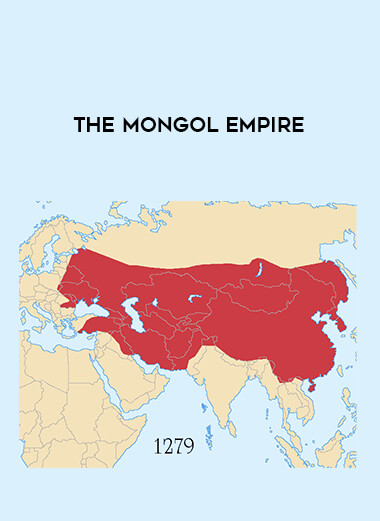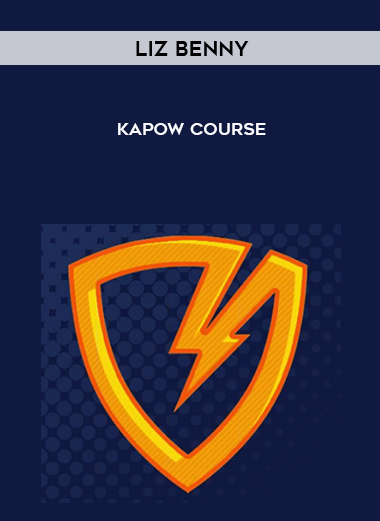
The Mongol Empire
Salepage : The Mongol Empire
Archive : The Mongol Empire Digital Download
Delivery : Digital Download Immediately
9.76 GB
These are two sides of the Mongol Empire, the world’s largest, most cruel, and yet one of the most intellectual empires. In The Mongol Empire, award-winning teacher and historian Professor Craig Benjamin brings both sides of this unique civilisation to life with 24 lectures that describe the fabled conquests and achievements of the Central Asian steppe nomads who flourished from the 1100s to the 1500s.
Even today, the Mongol conquerors remain almost as enigmatic as the victims of their surprise invasions so many centuries ago. Nonetheless, their kingdom was critical to the fate of Islam and Orthodox Christianity, as well as China’s civilisation. Furthermore, the lengthy period of peace they gave to Central Asia paved the way for reliable trade and cultural relations between Europe and East Asia. Indeed, many historians feel that the Mongol conquests, as brutal as they were, aided in the establishment of the modern world.
A swarm of Great Leaders
Internal politics within Mongol tribes may be complicated and brutal, with different kin and groups competing for dominance, as revealed in The Mongol Empire. However, three great Mongol emperors stand out among all the attempts for power:
Chinggis Khan (Chinggis Khan): This military genius, sometimes known more commonly as Genghis Khan, was nearly entirely responsible for the formation of the Mongol Empire in the early 1200s. He claimed a divine mandate to dominate the globe and came closer than any other ruler in history, eventually dominating nine million square miles—four times the size of the Roman Empire at its peak.
Qubilai Khan: The mythical ruler in Samuel Taylor Coleridge’s visionary poem Kubla Khan, Qubilai Khan, was a genuine Chinese Mongol emperor. Qubilai, the grandson of Chinggis Khan, spent decades defeating China’s Song dynasty before reigning over a splendid court that received the Italian adventurer Marco Polo in the 1270s.
Timur: This terrible warrior, often known as Tamerlane owing to his lameness, was responsible for millions of deaths throughout his conquests from Anatolia to India in the late 1300s and early 1400s. Timur made an indelible mark on the Western imagination, most notably in Christopher Marlowe’s 16th-century drama Tamburlaine the Great.
You’ll also come across an army of lesser-known but equally powerful khans, queens, and princes. Among them were Chinggis’s son and heir, Ogedai, who expanded his father’s empire and kept it together through his gift for administration; Toregene, who exercised complete power after the death of her husband, Ogedai; Batu, one of Chinggis’s grandsons, who founded the Golden Horde division of the empire, which extended into Hungary and threatened the heart of Europe; and Hulagu, another grandson, who invaded Persia and
The Mongol Military Success Formula
What made the Mongols so effective against world-class combatants such as the Turks, Chinese, Persians, and European armored knights? Professor Benjamin examines the characteristics that gave Mongol mounted archers a significant advantage, such as:
Horsemanship: The Mongols were excellent riders as pastoral nomads, and their herding talents were quickly converted to military-style attacks. Furthermore, their habit of large-scale winter hunts spanning several weeks provided them with training in complicated operations demanding discipline, coordination, and stamina.
The Mongols’ secret weapon was arrows launched in quick succession from composite bows. The bow was a laminate made of many types of wood, animal horn, and sinew. It enabled a short bow to retain the same amount of energy as a typical long bow, which was too cumbersome to use while riding.
Siegecraft: Unlike other nomads, the Mongols learned siegecraft so thoroughly that they were seldom foiled in their attempts to seize towns. The Mongols had access to the skills needed to create catapults, scaling towers, and other siege devices because to their fair treatment of captive artisans and craftsmen.
Furthermore, the Eurasian steppe’s nature—a virtually uninterrupted grassland stretching for 5,000 miles—provided the Mongols with a sparsely inhabited homeland with easy access to wealthy civilizations on its periphery: China, India, Persia, Anatolia, and Europe. Few other tribes could live on the parched steppe, but the Mongols could simply vanish at the end of their campaigns, only to reappear months or years later, thousands of miles distant, to threaten a new target.
Epic Drama and Various Cultures
Professor Benjamin, a pioneer in the field of “big history,” is particularly suited to recount the complicated tale of the Mongol Empire. Dr. Benjamin observes that the Mongols can only be completely comprehended when examined in their environmental, geopolitical, and cultural settings, which are all intertwined. In a broad examination of various circumstances, he provides a number of remarks on themes such as:
Pastoralism: Pastoralism, a mix of foraging and farming, enabled people to conquer the Eurasian steppe, particularly after the introduction of the horse around 6,000 years ago. Pastoralism, on the other hand, necessitates a nomadic lifestyle in which herds are continually driven to new meadows. The Mongol identity was shaped by this forced movement.
The Great Wall: For generations, the Chinese had faced nomad incursions and had erected walls to protect themselves. However, the agony caused by the Yuan dynasty, created by Qubilai Khan, inspired the Chinese to build “The Great Wall” once China recovered sovereignty. The wall, which stretched for thousands of kilometres, effectively deterred another Mongol invasion.
Tolerance for Religion: The Mongols accepted other religions despite their devotion to their sky deity, Tengri, who had granted them permission to conquer the whole globe. Some khans even became Buddhists, Christians, or Muslims. Given the continuous spread of Islam throughout Central Asia, the Mongol khanates became primarily Muslim over time.
Professor Benjamin has traveled extensively in the countries covered in this course. He describes the unusual beauty of the Eurasian steppe, the splendour of the Mongols’ sacred mountains, and the brilliance of some of their empire’s principal towns, which still preserve Mongol remnants. He also provides travel advice to areas that are definitely worth an adventurous off-the-beaten-path trip.
The most fascinating excursion, though, is this one: The Mongol Empire provides enormous drama in a variety of civilizations, over a long period of time, and spanning one-fourth of the Earth’s diameter. As you will see, the Mongol epic is one of the most astonishing stories in the lengthy history of the planet.
More from Categories : Everything Else











